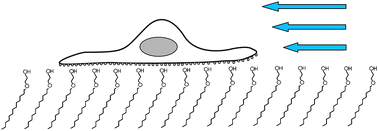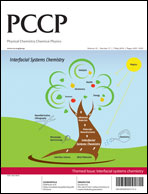Quantification of the adhesion strength of fibroblastcells on ethylene glycol terminated self-assembled monolayers by a microfluidic shear force assay
Abstract
The adhesion strength of

- This article is part of the themed collection: Interfacial Systems Chemistry: Out of the Vacuum, Through the Liquid, Into the cell

 Please wait while we load your content...
Please wait while we load your content...